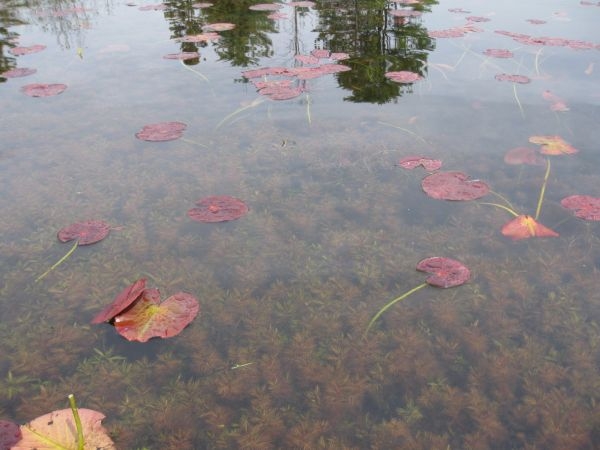
Eurasian Water Milfoil is enemy number one in the roughly 70 Vermont lakes and ponds choked by the invasive plant.
Lake Fairlee has controlled its milfoil by yanking it off boats and out of the lake, and applying a chemical. But now the state has restricted the use of the herbicide there, because of another plant – which is rare in Vermont – that’s also growing in the lake.
The removal campaign was going swimmingly until May, when scientists from the Department of Environmental Conservation showed up to check out reports of another aquatic plant, proserpinaca palustris, commonly called marsh mermaid weed.
The small, feathery plant grows in fewer than ten lakes in Vermont. That makes it rare, according to the Vermont Fish and Wildlife list.
"But this particular population is very exciting in that it is very happy where it is and I have not seen so much marsh mermaid weed at one location, said DEC biologist Ann Bove. "That doesn’t mean that we now need to consider it or de-list it, it just means it’s happy here for the time being."
But if the leafy mermaid is happy in Lake Fairlee, where milfoil-killing chemicals have been applied since 2010, then why worry about it now? That’s what some in the Lake Association are asking. Skip Brown has led the battle against milfoil, and he didn’t expect marsh mermaid to be an obstacle.
"We’ve joked a little bit about taking this plant and introducing it in several other lakes so that it will no longer be found in less than ten lakes, which as I understand it would not be illegal. But it would just be a little backhanded," said Brown.
Brown has no intention of doing that, of course, but neither can the Lake Association afford the state’s solution: to surround the marsh mermaid with a large plastic curtain before re-introducing the herbicide. Brown hopes the Lake Assocation and the state can negotiate a more workable remedy, while this year’s chemical treatment is on hold.
Meanwhile, another lakeside resident and amateur botanist, Dale Gephart, would like to learn more about the non-invasive mermaid weed, which was first discovered in 2008 by a class for lake monitors.
"And one of the biologists was here and said, ‘Wait a second. What is this?’ And they had to actually take it back to the lab and look it up," said Gephart.
The non-descript plant is not rare in other parts of New England, and is common in warm waters (including home aquariums). Gephart says it easily escapes notice in a hard-to-access part of Lake Fairlee.
"You can’t walk there and you can’t paddle there so it’s over there in six inches of water doing its thing," he noted.
And one of the things it’s doing is slowing down the milfoil control program. State biologists say Fairlee has been a model of vigilance, deploying a greeter to educate boaters who may be bringing the weed into the lake, and conscripting a small army of weed pullers. But the Lake Association says an herbicide is also needed, and they hope for a more successful permit application next year.